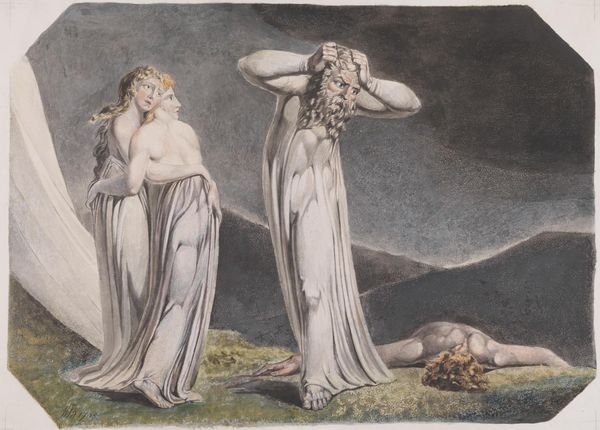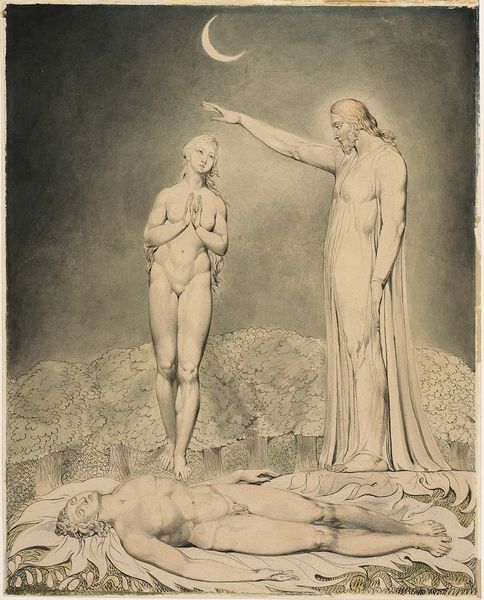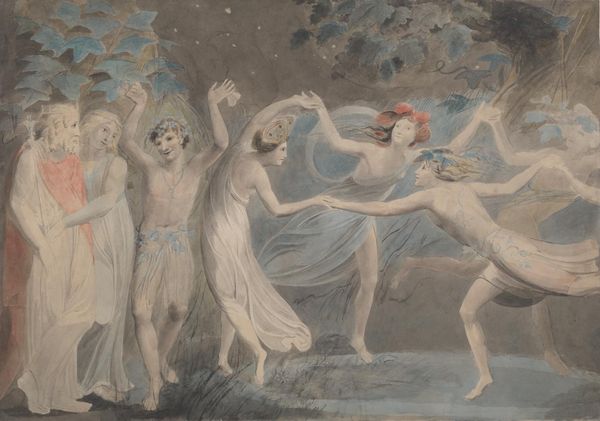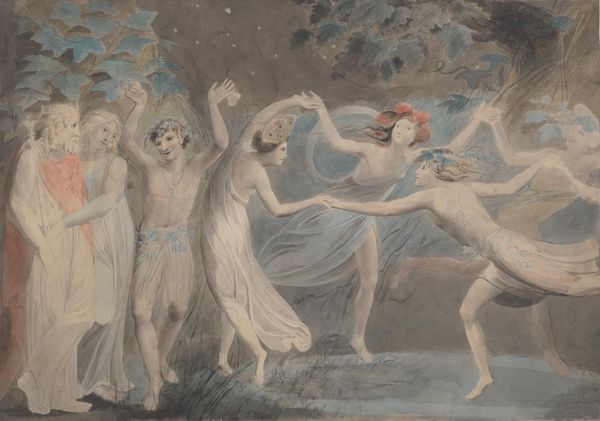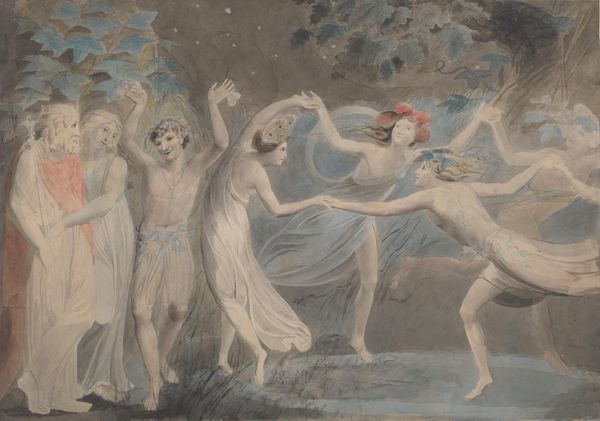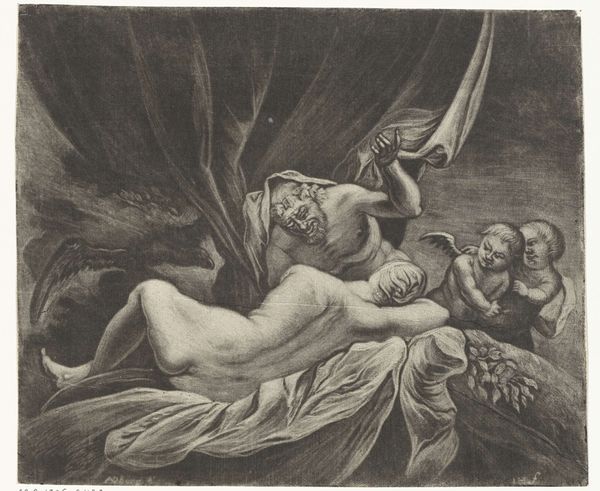
Dimensions: support: 431 x 608 mm
Copyright: NaN
Editor: Here we have William Blake's "Lamech and his Two Wives", currently residing in Tate Britain. It's a watercolor piece that just exudes turmoil, doesn’t it? What's your take on this chaotic scene? Curator: It feels like a raw, exposed nerve, doesn't it? Blake plunges us into Lamech's world, post-crime, thick with guilt and dread. Notice how the moonlit palette throws the figures into stark relief, heightening the emotional stakes. It's not just a depiction, it's a psychic landscape. Editor: Psychic landscape, I love that. Curator: What about the two wives? How do they strike you? Editor: They seem to be a source of comfort. Almost like, “We are here and we forgive you.” Curator: Perhaps, but Blake often used women to symbolize complex states of mind. Maybe they represent conscience, or even the seductive pull of justification. Or perhaps Blake is making a comment on the very nature of forgiveness itself. Food for thought, eh? Editor: Definitely! This has given me a whole new perspective on Blake's work. Curator: Mine too! The best art always leaves room for interpretation.
Comments
tatebritain about 2 months ago
⋮
http://www.tate.org.uk/art/artworks/blake-lamech-and-his-two-wives-n05061
Join the conversation
Join millions of artists and users on Artera today and experience the ultimate creative platform.
tatebritain about 2 months ago
⋮
This work illustrates a Biblical scene from the Old Testament book of Genesis. Lamech, a descendant of Adam, confesses to his wives Adah and Zillah: ‘I have killed a man for wounding me, a young man for injuring me.’ Blake depicts the dead man sprawled face down, while Lamech stands beside him, passionately clutching at his hair. Adah and Zillah fearfully cling to one another. This is one of a series of 12 large colour prints Blake made using an experimental hybrid of printing, drawing, and painting. It was bought by Thomas Butts, one of Blake’s most important patrons. Gallery label, June 2024
